Your basket is currently empty!
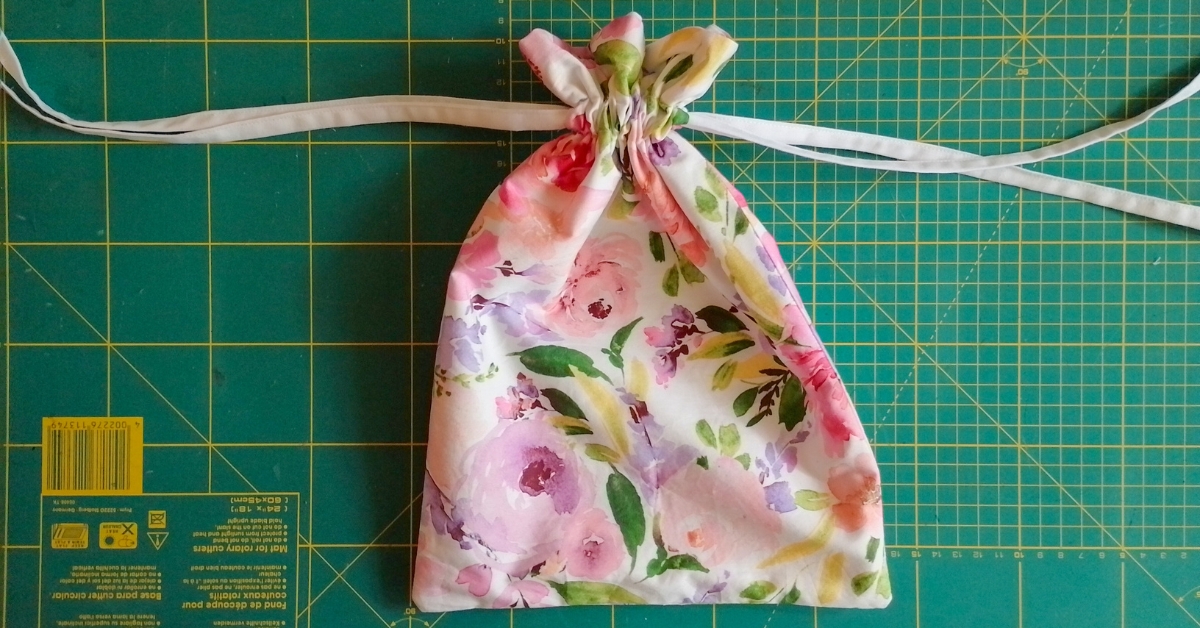
How to Sew a Drawstring Bag with Lining (Free template included)
Today, I have an easy and fairly quick sewing tutorial for you. I’ll be showing you how to sew a drawstring bag with lining. Adding a lining to this beginner sewing project gives it a little something extra and is a great way to experiment with different colors and patterns. You can mix and match fabrics to create a bag that suits your style.
To keep things simple, I’ve included the measurements of the fabric pieces in the tutorial, so you can cut the pieces yourself if you like. If you prefer to skip the measuring, here is a one-size free printable pattern template.
And if you’d like more flexibility, you can get my 3-size printable pattern for free on Creative Fabrica’s free trial.
Note: This is an affiliate link, which means I may earn a commission if you later make a purchase at no extra cost to you.
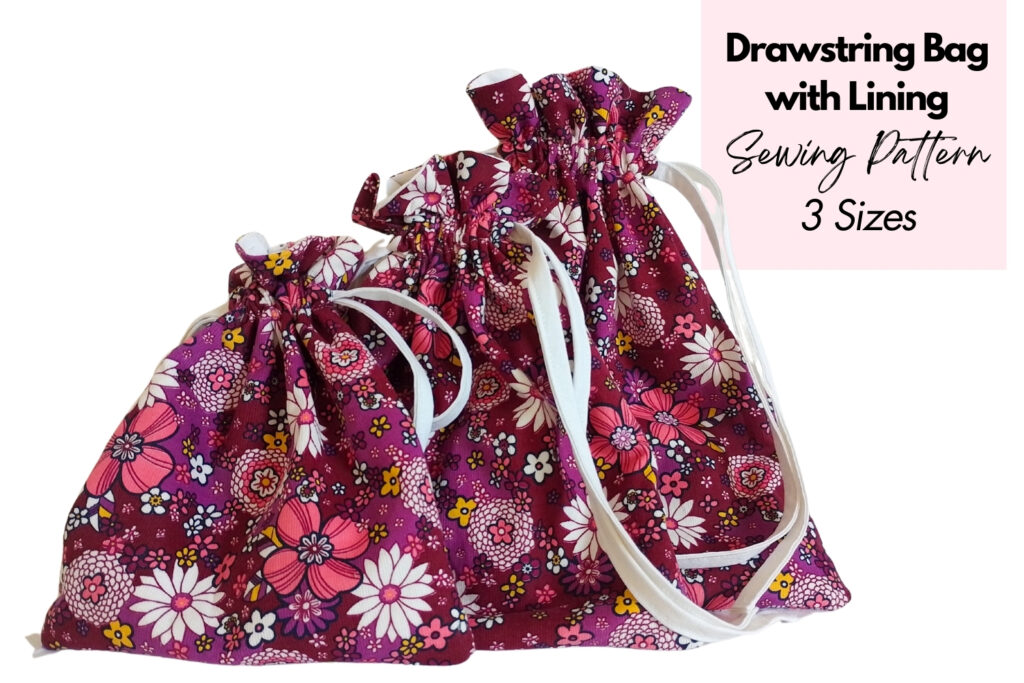
Materials
Download the free template or cut out the following:
- 2 rectangles of main fabric, each 35 cm long by 25 cm wide
- 2 rectangles of lining fabric, each 35 cm long by 25 cm wide
- 2 strips of fabric for drawstrings, each 70 cm long by 4 cm wide

Instructions
1. Prepare the Fabric Pieces
Cut the fabric pieces as listed above. On the main fabric rectangles, mark 5 cm down from the top edge on both sides. Then, mark another 2.5 cm down from the 5 cm mark on both sides.
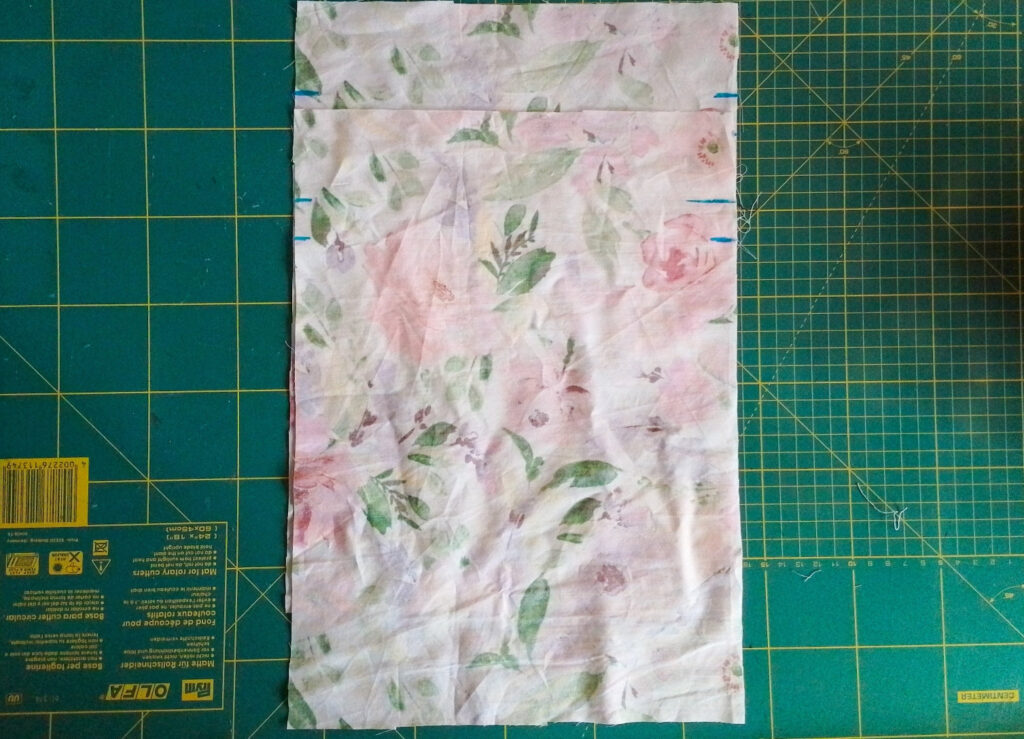
2. Sew the Main Fabric
Pin the two main fabric rectangles together, right sides facing each other.
- Starting from the top edge, sew down the side using a 1 cm seam allowance. Stop at the 5 cm mark and backstitch to secure the seam. Cut the thread.
- Skip over the 2.5 cm marked area (this will create the opening for the drawstring later). Resume sewing from the bottom of the 2.5 cm mark, backstitch to secure the seam, and continue sewing around the rectangle until you reach the next 2.5 cm mark. Stop sewing at this mark and backstitch to secure. Cut the thread.
- Leave the top edge of the main fabric open.
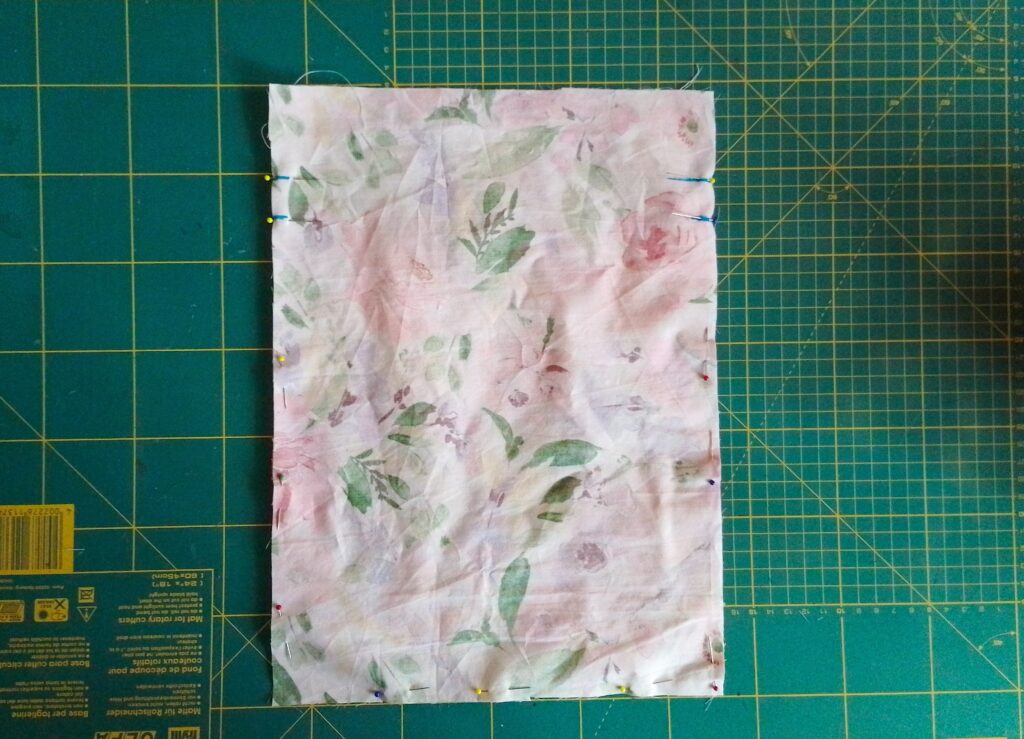
3. Sew the Lining
Repeat the process for the lining fabric but leave a gap at the bottom that is 4-5 five fingers wide for turning the bag later.
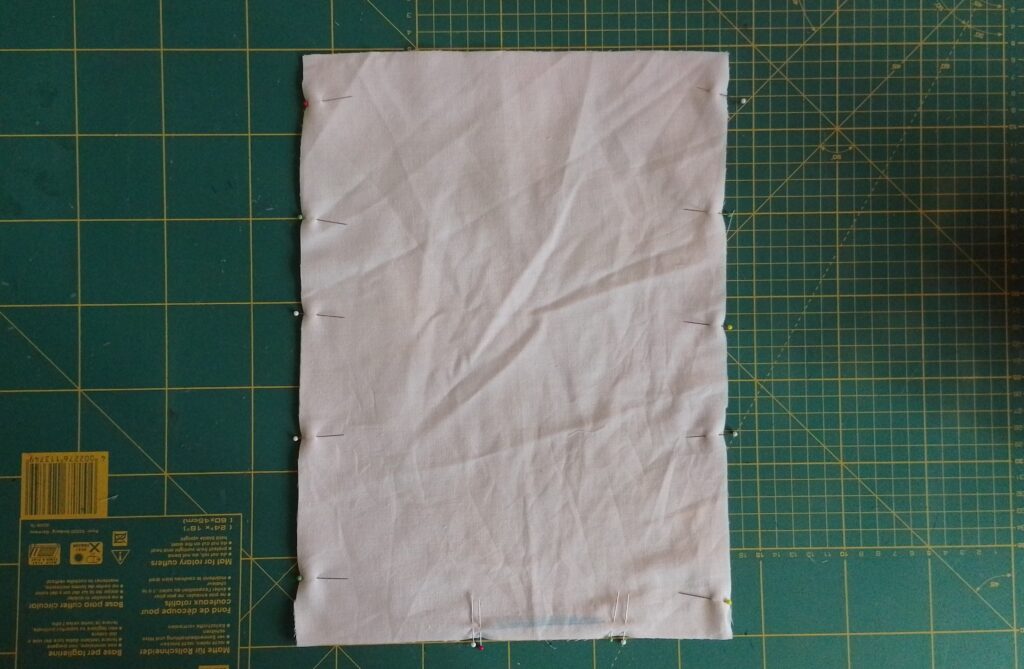
- Press both your bags and carefully clip out the corners. Take care not to cut into the line of stitching

- Press the seams of both bags open.
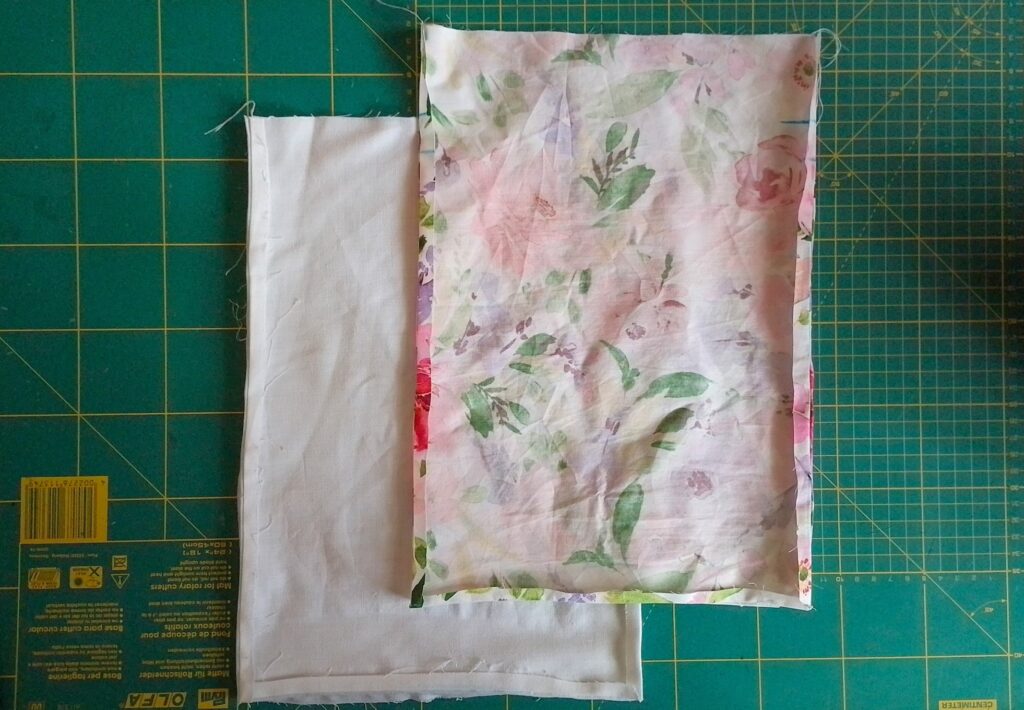
4. Attach the Main and Lining Bags
- Turn the main fabric right side out. Use a blunt object like chopsticks to push the corners out.
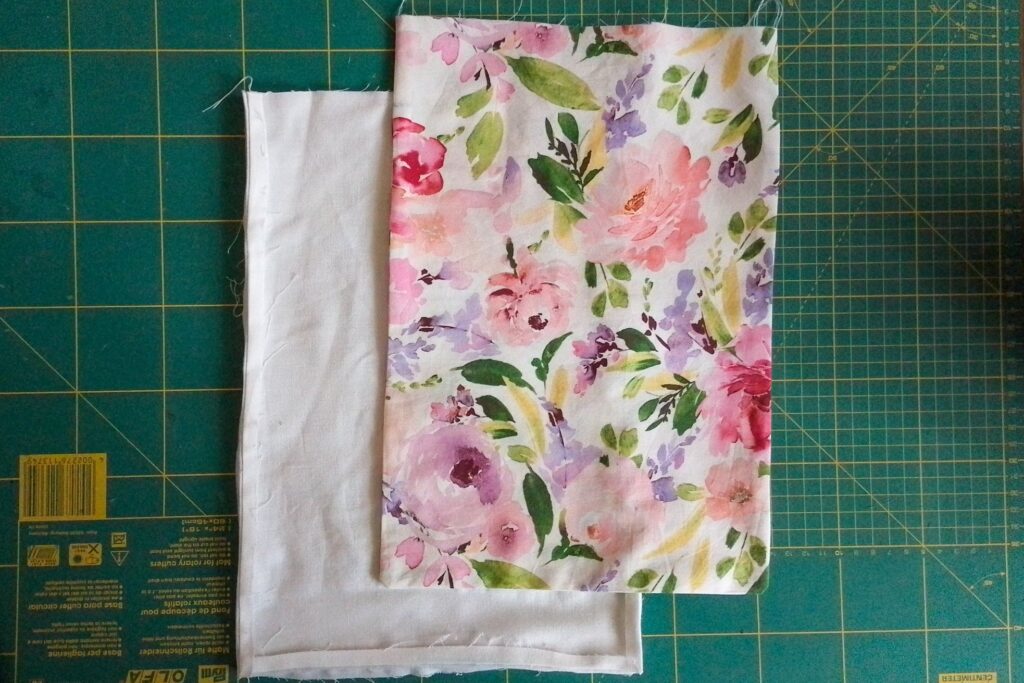
- Insert the main bag it into the lining (lining remains wrong side out). Right sides of both bags should now be facing.
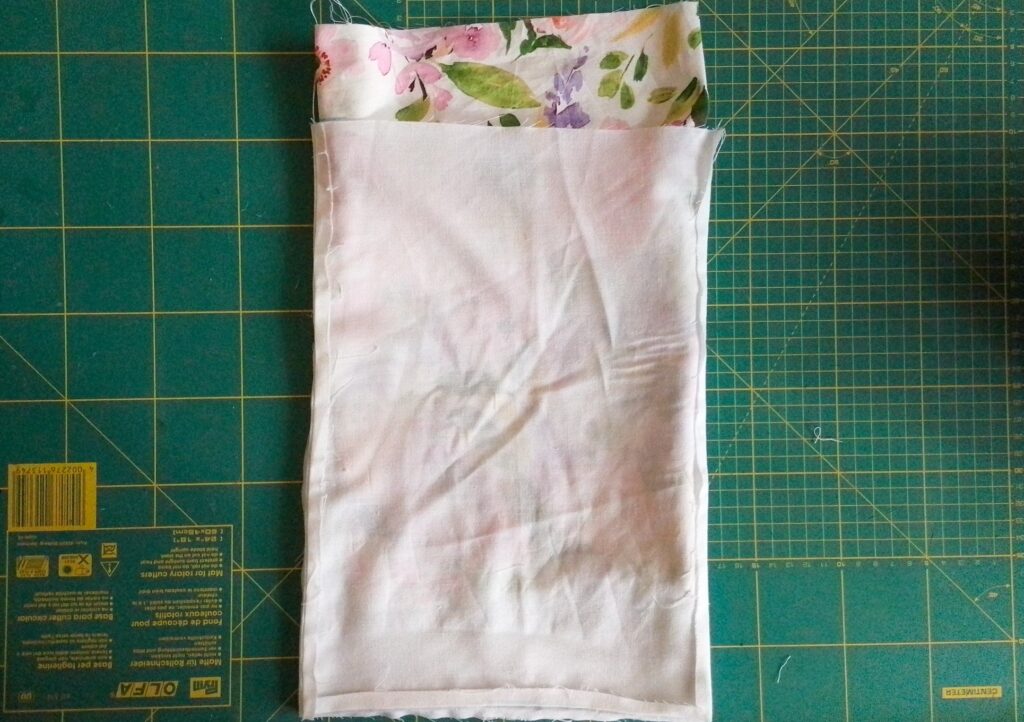
- Pin the bags together and sew the around the top edge
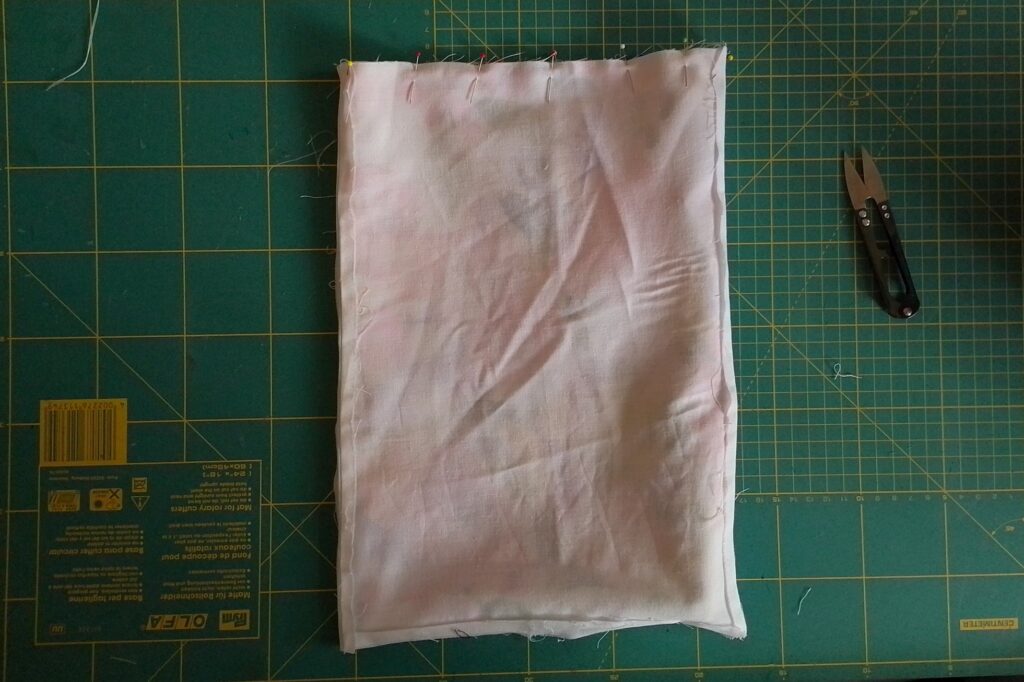
5. Turn the Bag
- Pull the main bag out through the gap left in the lining.
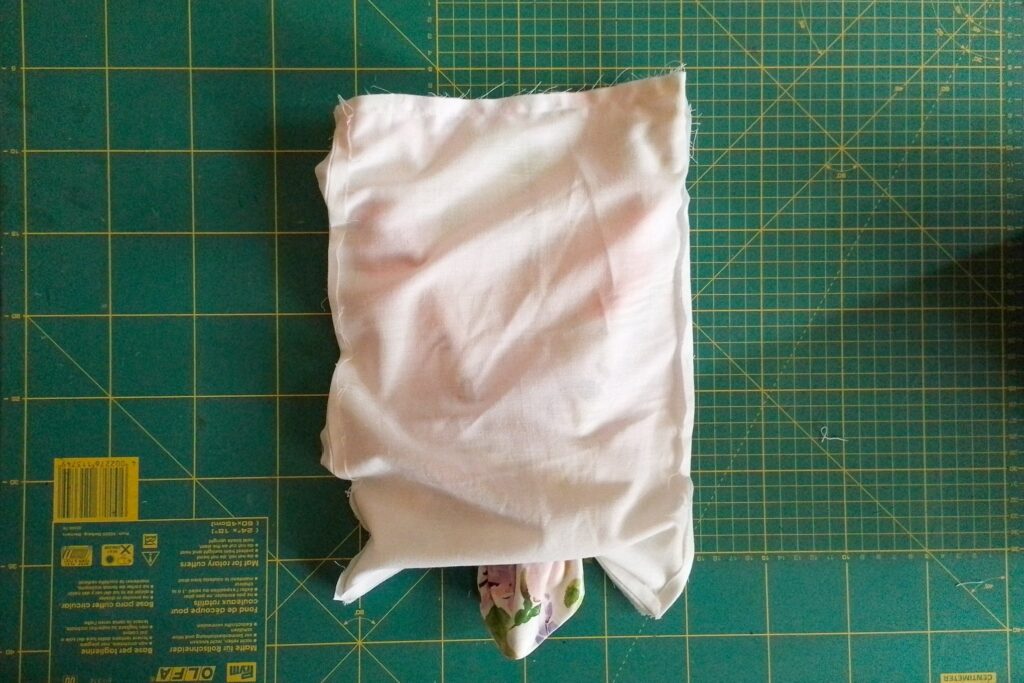
- Continue until you pull the lining out as well.
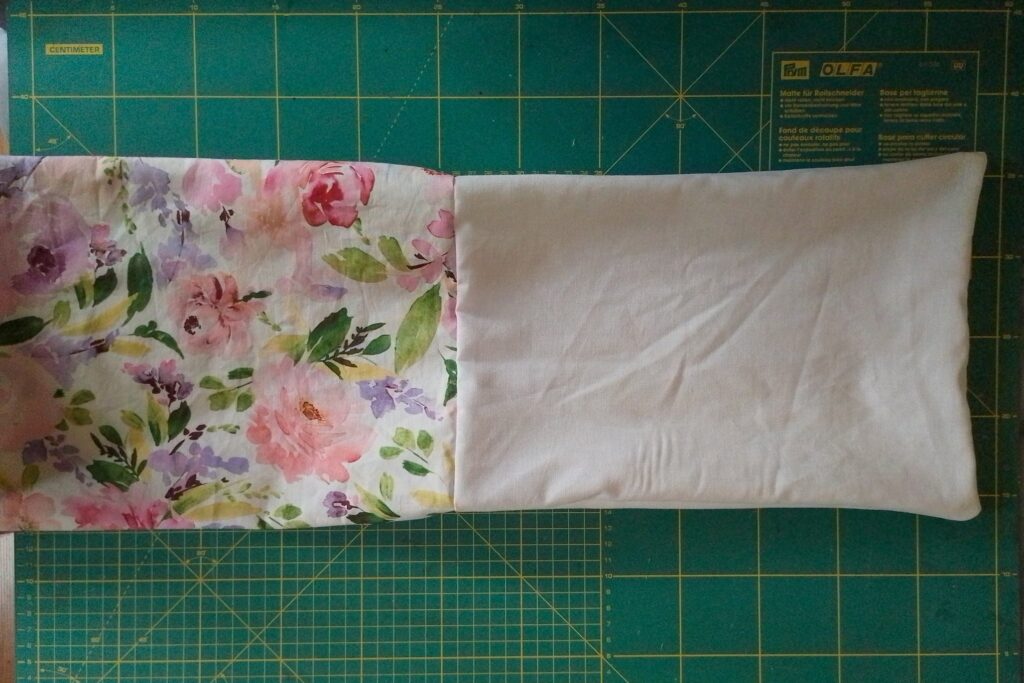
- Close the gap of the lining with a slip stitch or by topstitching.
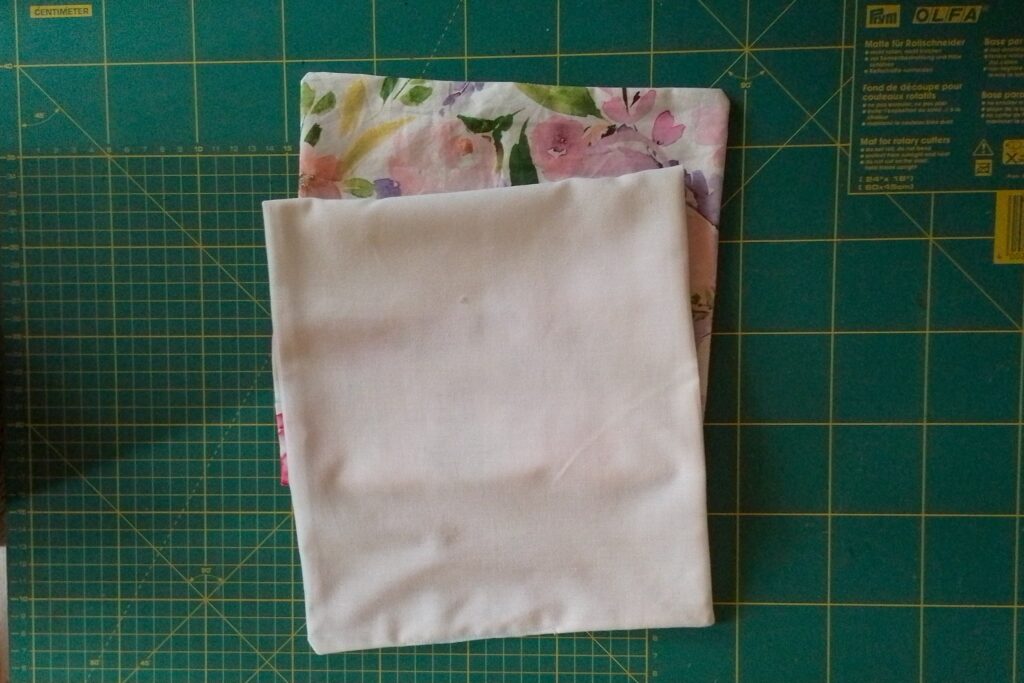
- Fold the lining into the main bag.
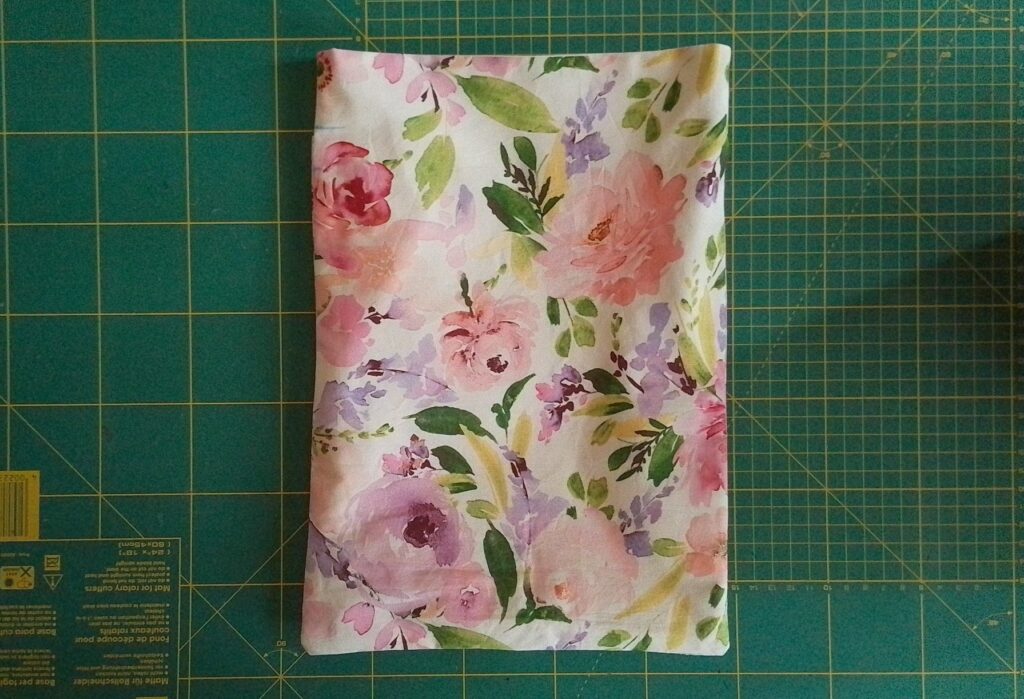
6. Sew the Drawstring Casing
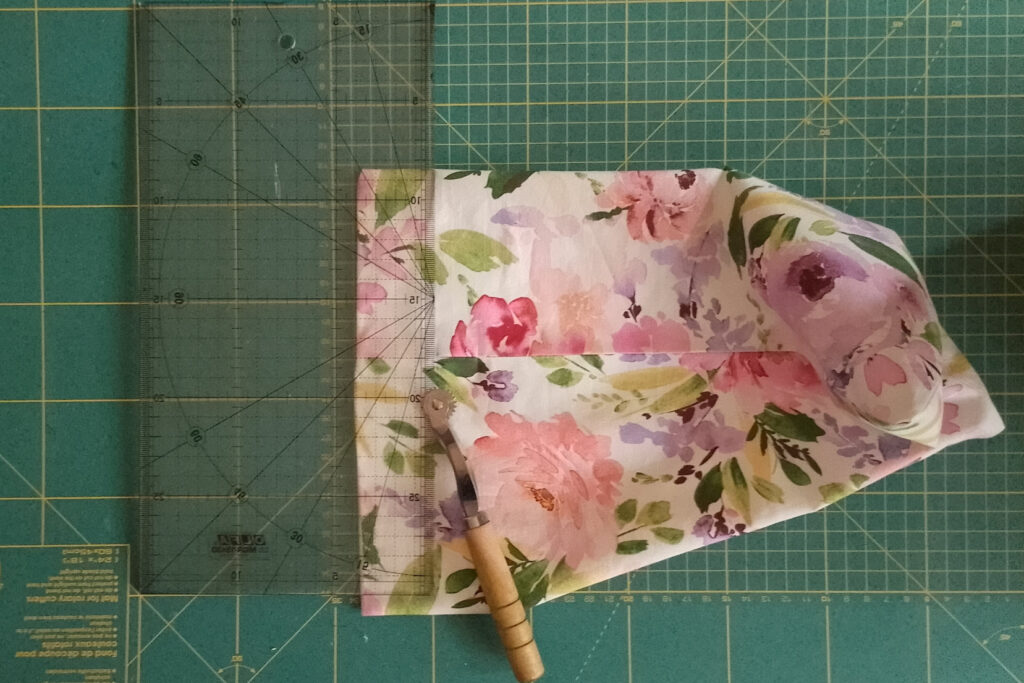
Sew two parallel lines above and below the drawstring openings to form the casing. You can make markings to help you.

7. Create and Insert Drawstrings
Take one of your drawstring fabric pieces and repeat the following steps for the others:
- Fold both short edges in by 0.6 cm (1/4 inch) and press to conceal the raw edges.
- Edgestitch along the folded edges.
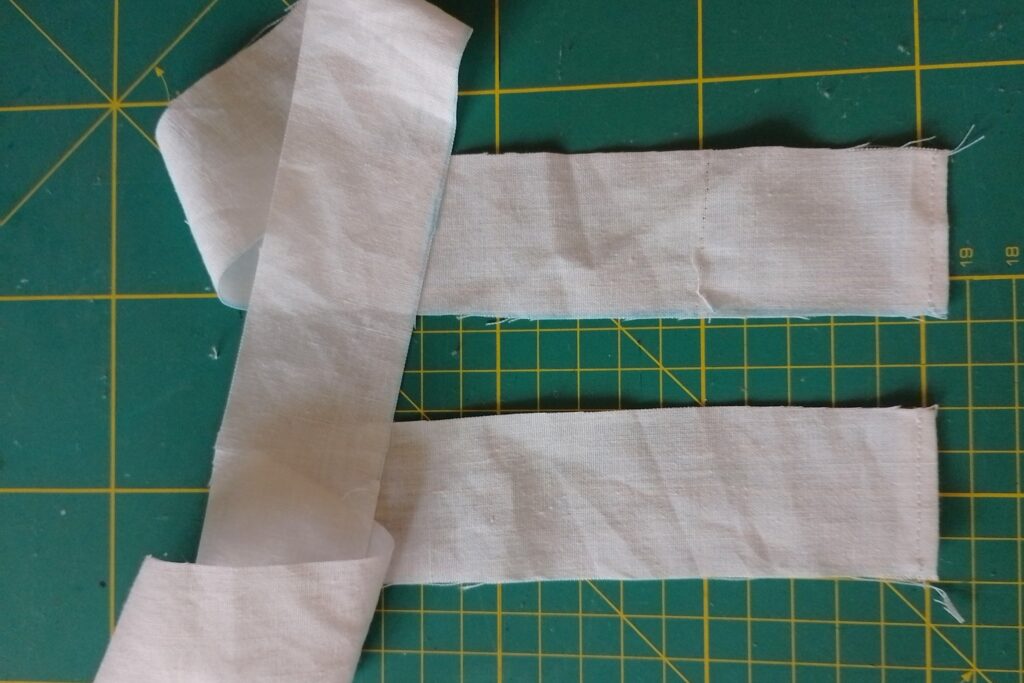
- Fold the drawstring lengthwise and press to create a crease.
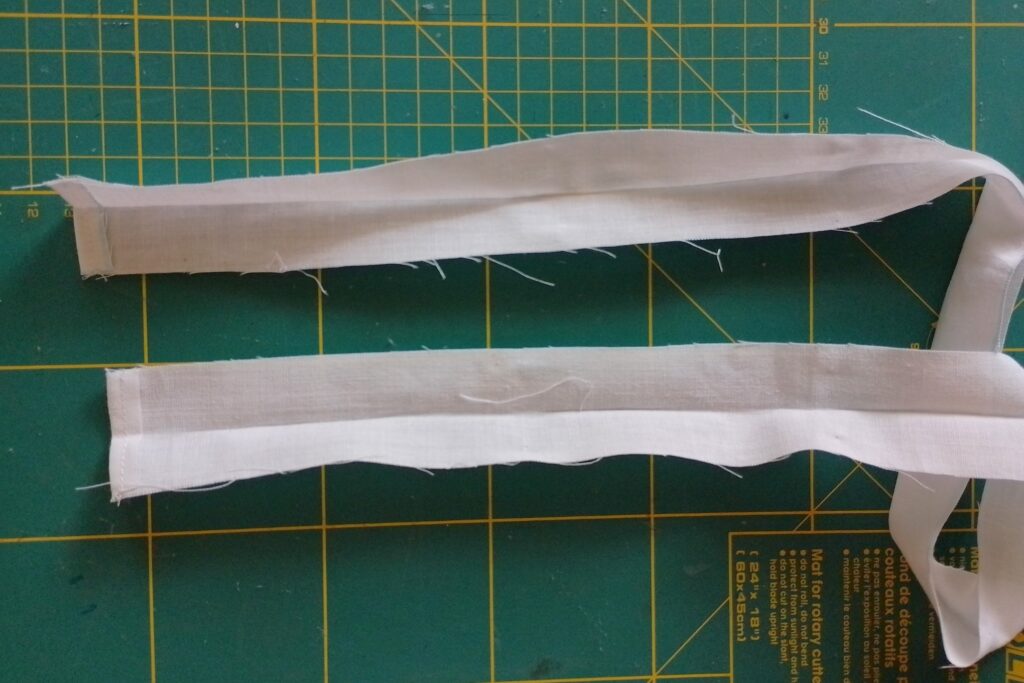
- Open the fabric back out and fold each long edge towards the center crease. Press the folds.
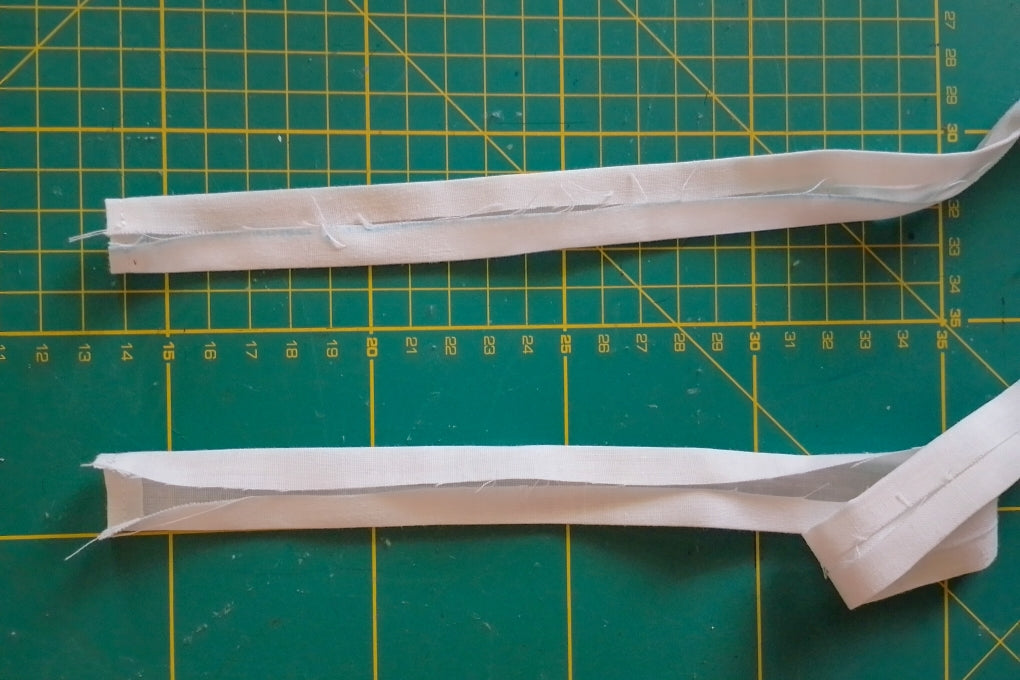
- Finally, fold along the original center crease and edgestitch around the entire length to create your drawstring.
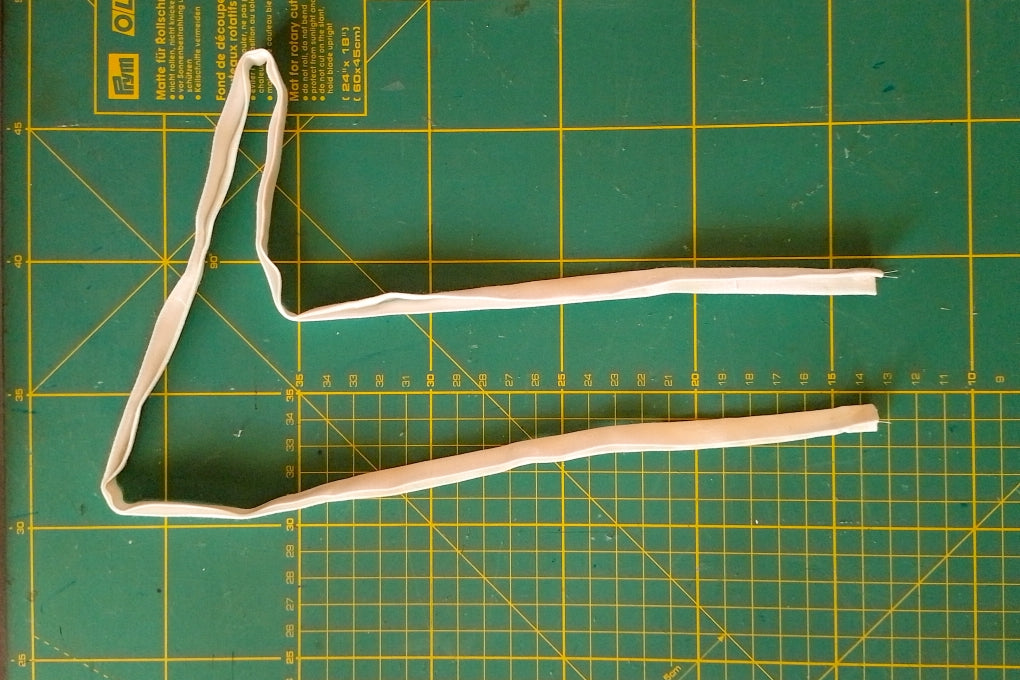
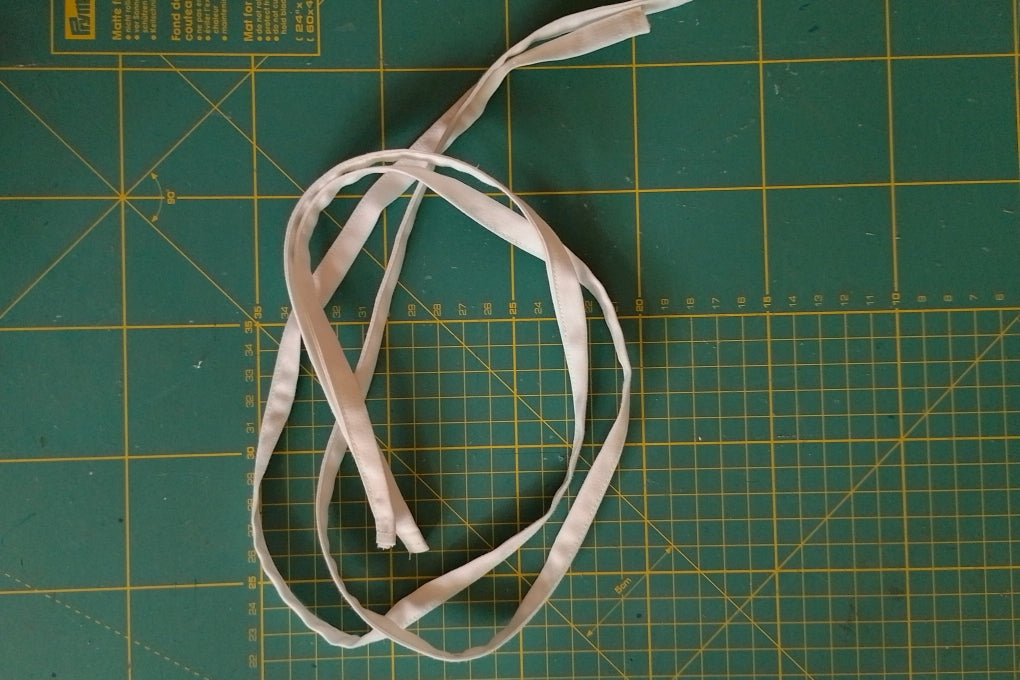
Once both drawstrings are made, attach a safety pin to one end of one drawstring. Insert it through one of the casing openings and feed it around the bag, exiting through the same opening.

Repeat with the second drawstring, starting from the opposite opening. Pull on the ends to gather the bag, ensuring the drawstrings are even.
Knot the drawstrings if you like to make sure they don’t get lost in the casing.
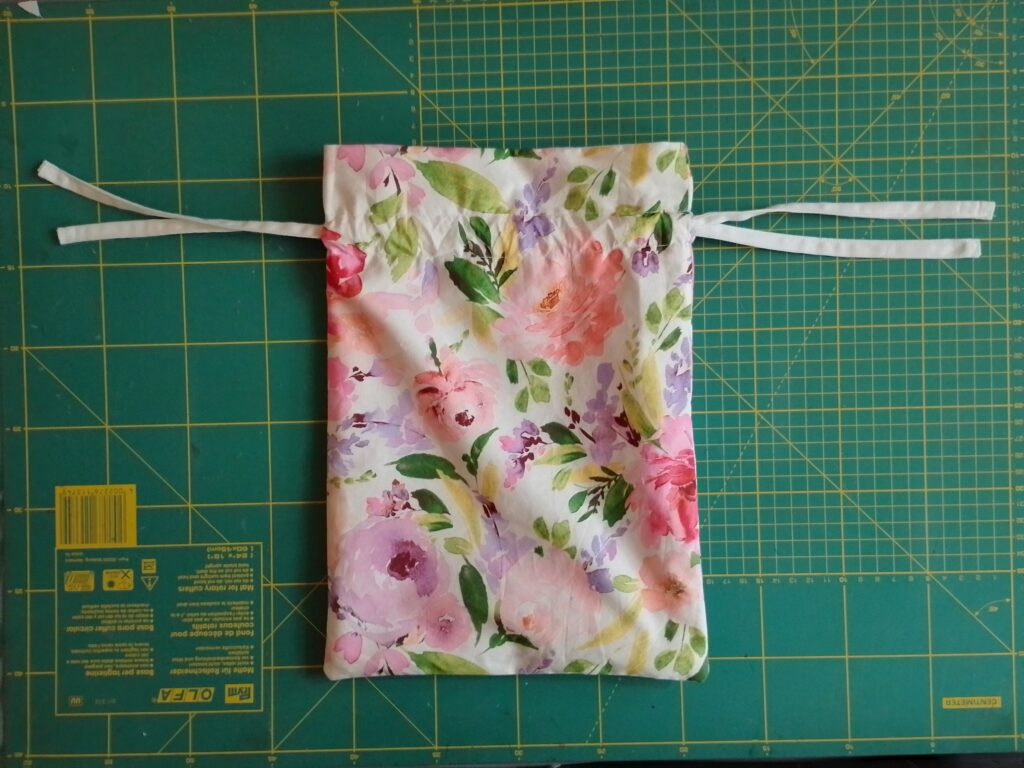
All Done! Congrats!

Wanna sew some gifts for your loved ones? Check out this Gift Giving (Sewing Edition) blog post that contains 5 of my sewing tutorials that include sewing patterns. 👇

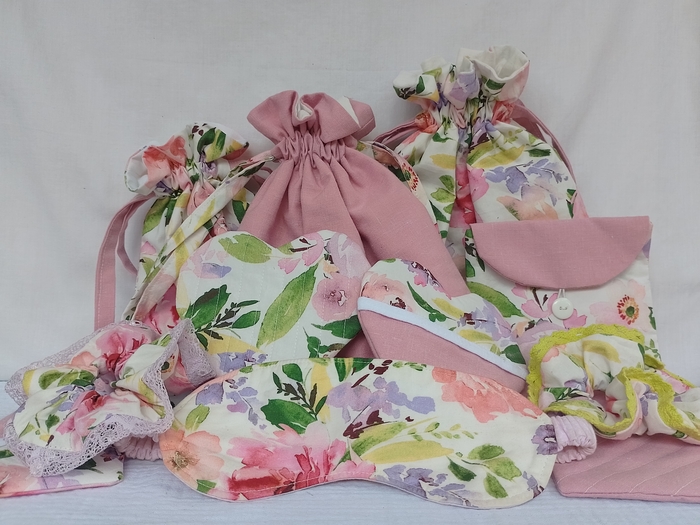
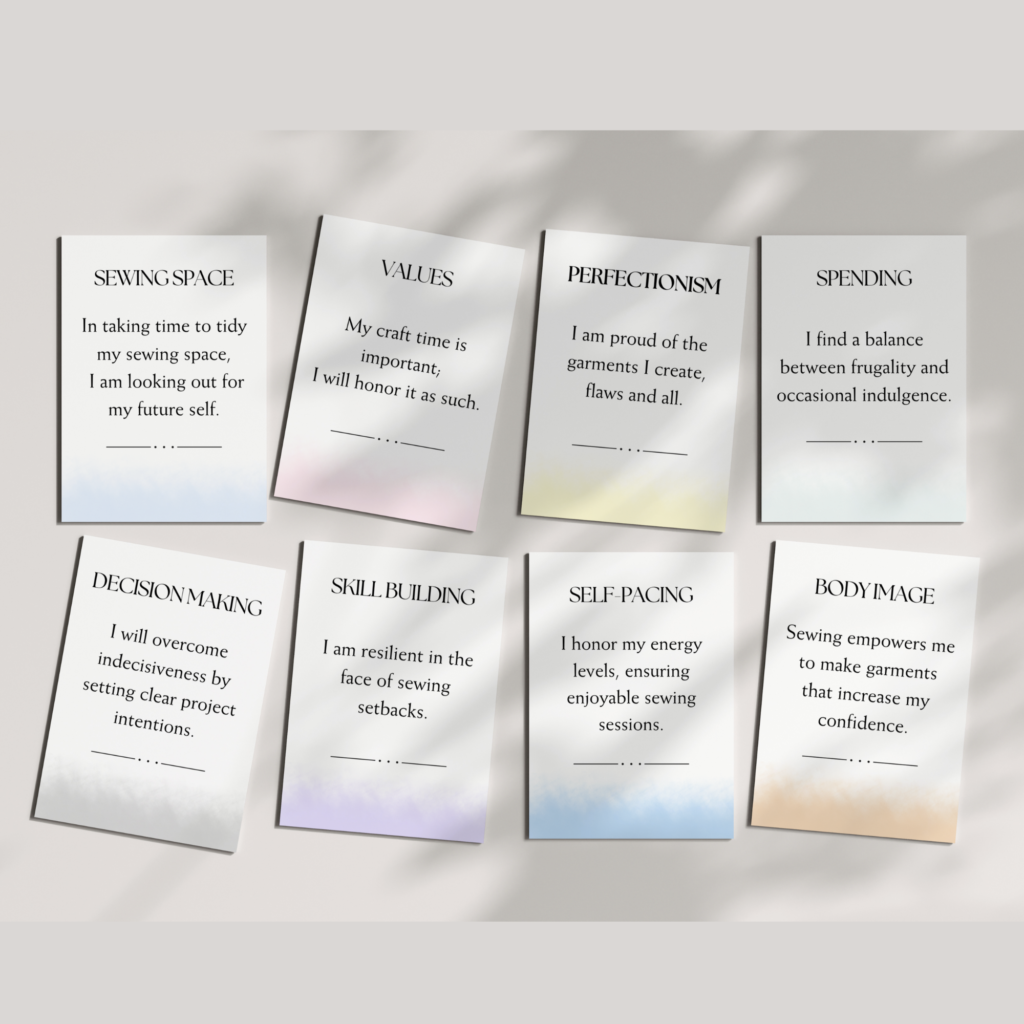
Leave a Reply